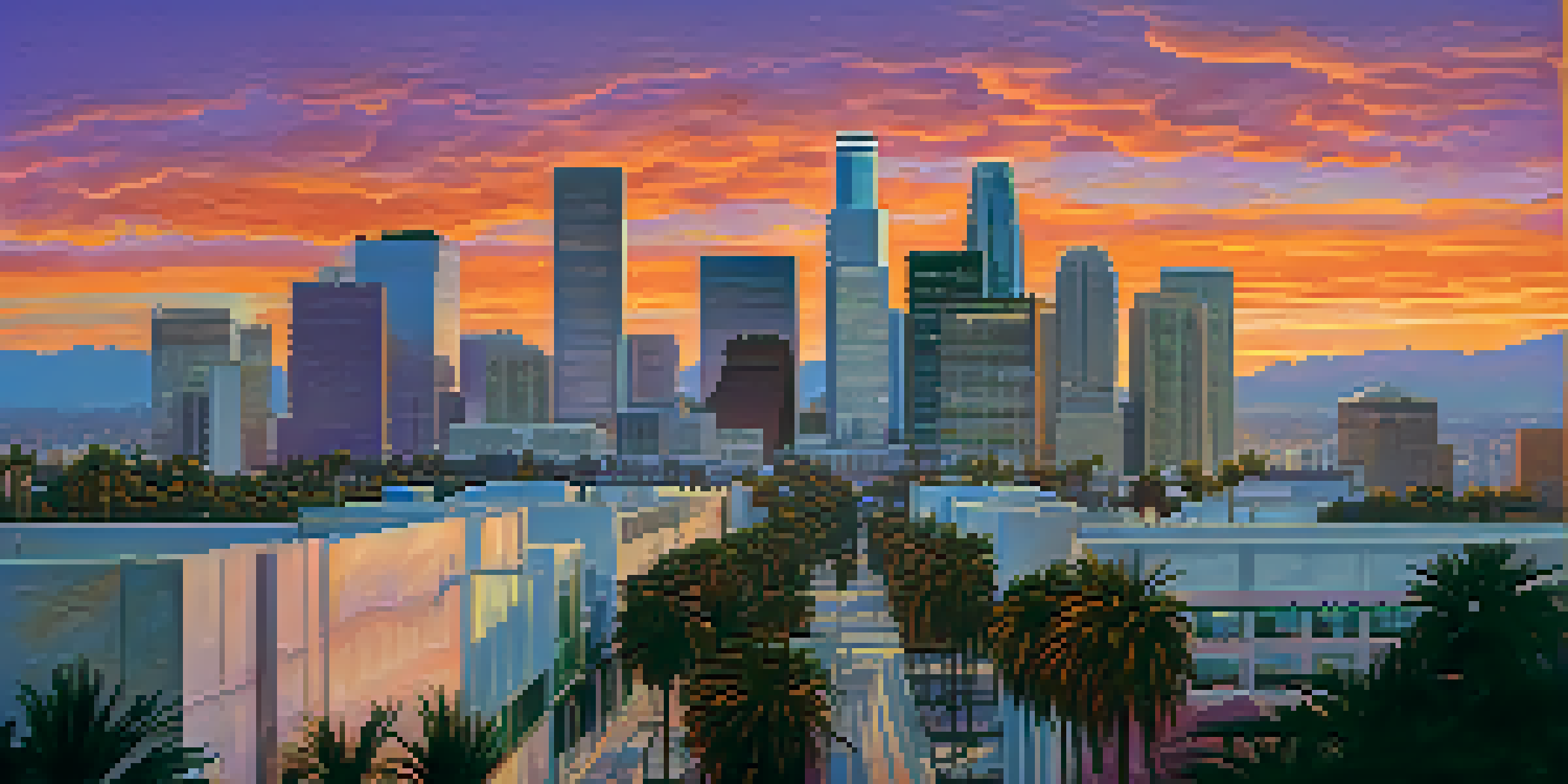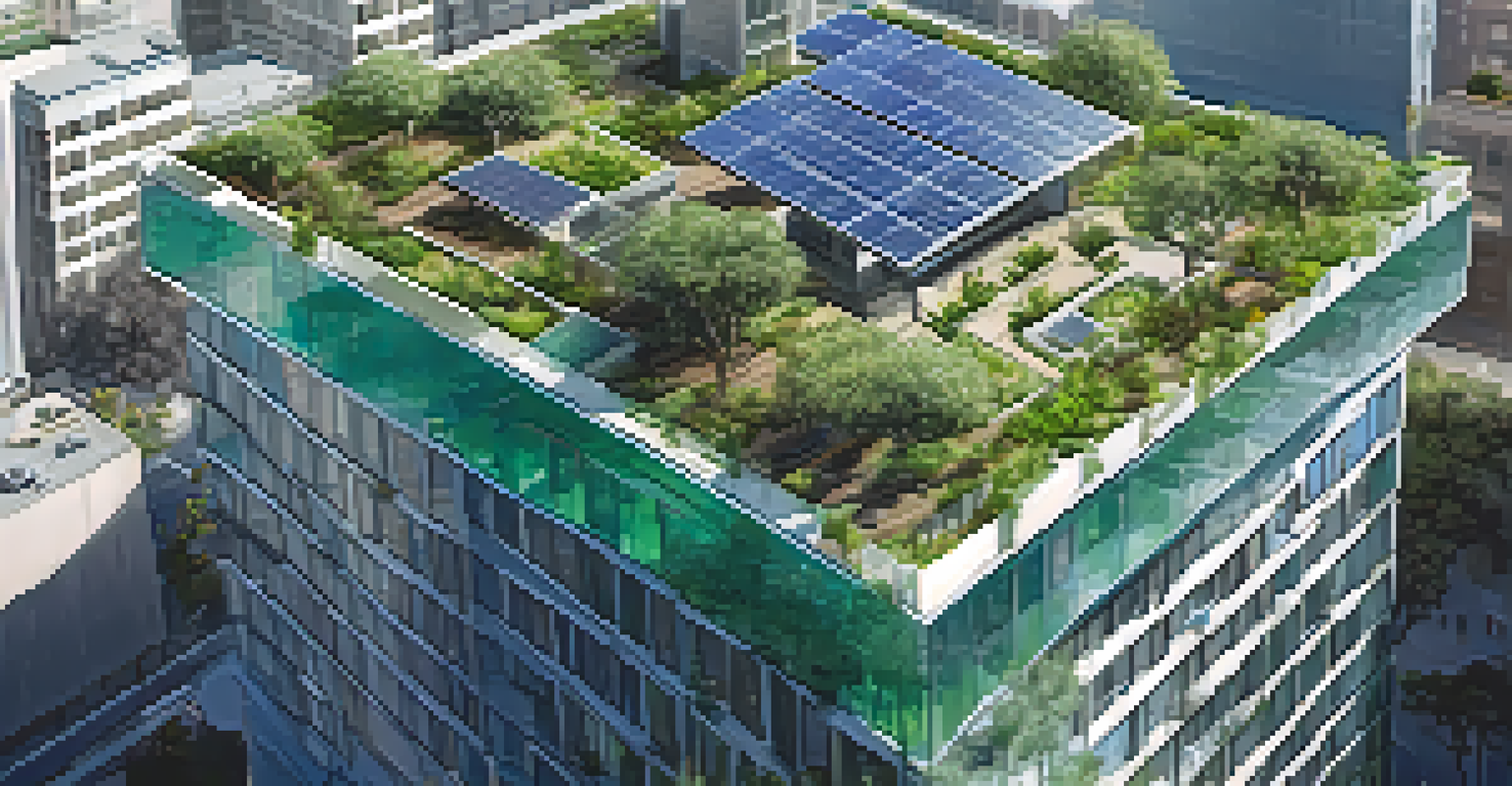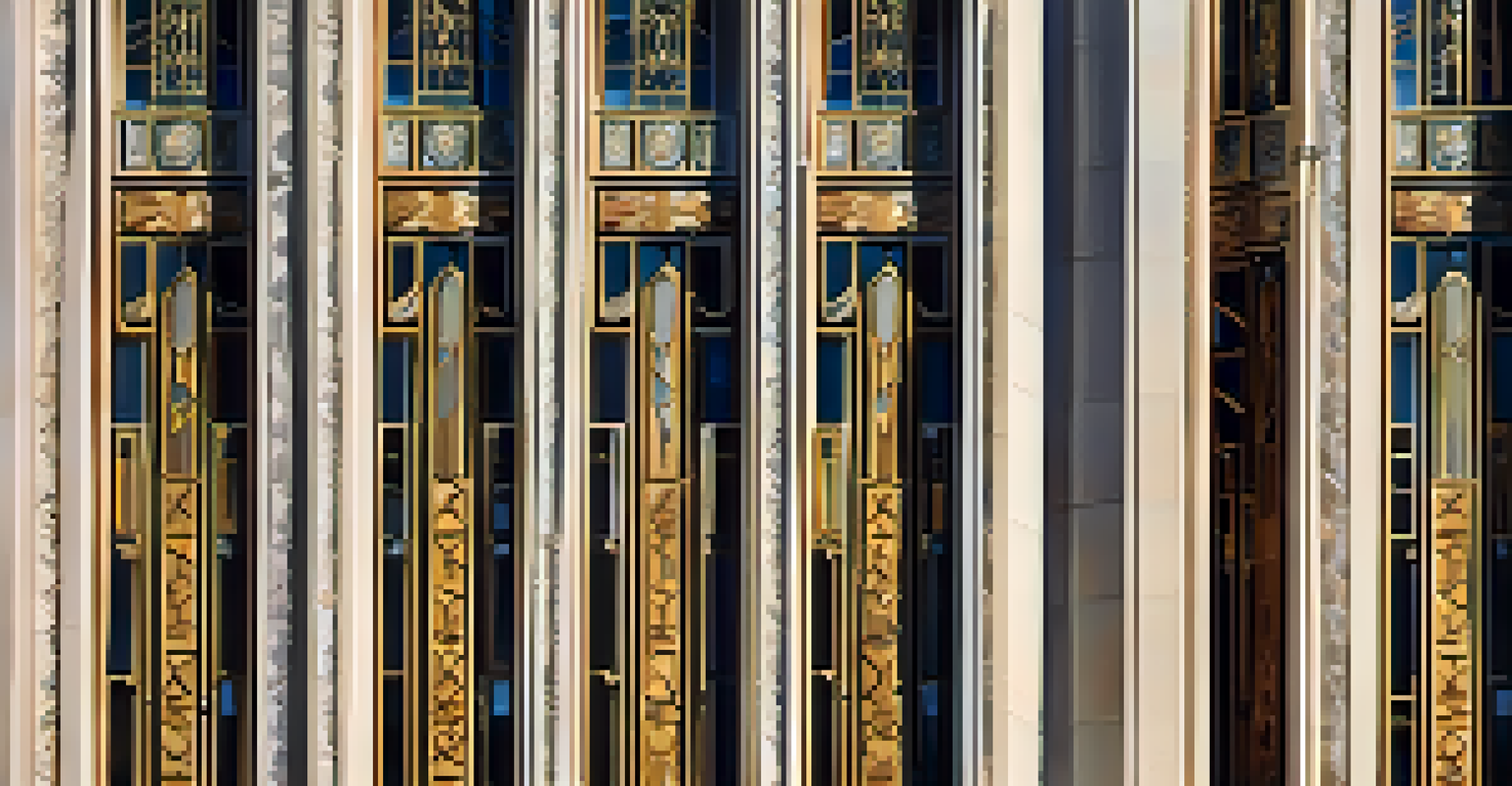Los Angeles Skyscrapers: A Journey Through Architectural Styles

The Iconic Skyline: A Brief Overview of LA's Skyscrapers
Los Angeles boasts a skyline that is as diverse as its culture. From the sleek modernism of the 21st century to the historic designs of the early 20th century, each building tells a unique story. The skyline is often recognized for its iconic silhouette, with structures like the U.S. Bank Tower and the Wilshire Grand Center standing tall among the rest.
Architecture should speak of its time and place, but yearn for timelessness.
The city's skyscrapers are not just buildings; they are symbols of ambition and creativity. Each architectural style reflects the era in which it was built, influencing the overall aesthetic of the city. This journey through LA's architectural styles will take us from Art Deco to contemporary designs, showcasing the evolution of urban architecture.
As we explore these towering giants, it becomes clear that each skyscraper contributes to the rich tapestry of Los Angeles. Whether you're a local or a visitor, the skyline offers an ever-changing backdrop that captures the spirit of the city.
Art Deco Elegance: The Roaring Twenties Influence
Art Deco emerged in the 1920s and found a prominent place in Los Angeles architecture. Characterized by bold geometric shapes and lavish ornamentation, this style reflects the optimism of the era. Buildings like the Bullocks Wilshire, with its stunning spire and intricate details, exemplify this glamorous aesthetic.

These skyscrapers often featured vibrant colors and luxurious materials, creating a sense of grandeur that captivated onlookers. They were not just functional; they were art pieces that transformed the urban landscape. The influence of Art Deco can still be seen today, as many of these buildings are preserved and celebrated.
Evolution of LA's Architectural Styles
Los Angeles' skyscrapers showcase a rich blend of architectural styles, from Art Deco to modernism and postmodernism, reflecting the city's cultural evolution.
As we stroll through the streets of LA, the Art Deco skyscrapers serve as a reminder of a bygone era. They invite us to appreciate the craftsmanship and creativity that went into their design, making them beloved landmarks in the city's architectural history.
Modernism: A Shift Towards Simplicity and Functionality
The mid-20th century brought a wave of modernism to Los Angeles, emphasizing simplicity and functionality. Architects like Richard Neutra and Pierre Koenig championed this movement, focusing on clean lines and open spaces. The iconic Case Study Houses showcase this ethos, blending indoor and outdoor living.
The best way to predict the future is to invent it.
Modernist skyscrapers often utilized new materials like steel and glass, which allowed for innovative designs and larger windows. This shift not only changed the look of the city but also how its inhabitants interacted with their environment. The transparency and lightness of these buildings reflected a new way of thinking about urban life.
As we look at modernist skyscrapers, we can see the influence of this period in the architectural landscape of LA today. These structures continue to inspire architects and designers, proving that simplicity can create powerful statements in the heart of a bustling city.
Postmodernism: Playfulness and Historical References
The late 20th century saw the rise of postmodernism, bringing a sense of playfulness back into architecture. Unlike its modernist predecessors, postmodern buildings often feature eclectic styles and historical references. The AT&T Building, designed by Michael Graves, is a prime example, with its whimsical design and classical elements.
This architectural style encourages creativity, allowing architects to mix and match influences from different periods. This has resulted in unique structures that stand out against the skyline, sparking conversation and intrigue. Postmodernism's embrace of irony and humor has made it a beloved style for many in the architectural community.
Sustainability in Urban Design
Recent trends in Los Angeles emphasize sustainable architecture, integrating eco-friendly practices and materials to create healthier urban environments.
As we explore postmodern skyscrapers, we can appreciate how they challenge traditional notions of design. They remind us that architecture can be both functional and fun, inviting us to engage with the built environment in new ways.
Sustainable Architecture: A Modern Necessity
In recent years, sustainability has become a crucial focus in architectural design. Skyscrapers in Los Angeles are increasingly incorporating green building practices and eco-friendly materials. Structures like the Los Angeles City Hall exemplify this shift, showcasing energy-efficient systems and sustainable landscaping.
These sustainable skyscrapers not only reduce their environmental impact but also promote healthier living and working conditions. Features like green roofs, solar panels, and natural ventilation are becoming common, setting a precedent for future developments. The focus on sustainability reflects a growing awareness of our responsibility to the planet.
As we look to the future, it's inspiring to see how Los Angeles embraces sustainable architecture. These innovations not only enhance the skyline but also contribute to a more livable and environmentally friendly city.
Cultural Reflections: Skyscrapers as Symbols of Identity
Los Angeles skyscrapers serve as cultural landmarks that reflect the city's identity. Each building tells a story, representing the aspirations and values of the community. The Staples Center, for example, not only hosts sports events but also embodies the spirit of entertainment that defines LA.
These structures often become symbols of pride for local residents, encapsulating the city's diverse cultural heritage. From historic theaters to modern corporate headquarters, each skyscraper contributes to the narrative of Los Angeles. They invite us to explore the rich tapestry of cultures that make up this vibrant metropolis.
Skyscrapers as Cultural Symbols
The city's skyscrapers serve as cultural landmarks, embodying the aspirations and identity of Los Angeles and its diverse communities.
As we admire these architectural wonders, we can appreciate how they shape our understanding of the city. They serve as reminders of who we are and where we come from, enhancing our connection to the urban landscape.
The Future of Skyscrapers: Innovations on the Horizon
As technology continues to evolve, so too does the design of skyscrapers in Los Angeles. Innovations like smart buildings and vertical gardens are reshaping how we think about urban living. Architects are exploring new materials and construction techniques to create structures that are not only beautiful but also efficient and resilient.
The future skyscrapers will likely prioritize sustainability, incorporating renewable energy sources and advanced building systems. As cities grow and populations increase, these innovations will be essential in addressing urban challenges. Los Angeles is at the forefront of this architectural revolution, paving the way for a new era of skyscrapers.

Looking ahead, it's exciting to envision how these advancements will transform the skyline. The skyscrapers of tomorrow will not only define the city visually but will also enhance the quality of life for its residents, proving that architecture can be both functional and forward-thinking.